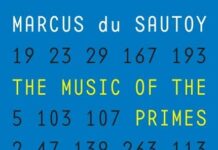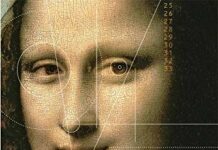
Ebook Info
- Published: 2012
- Number of pages: 400 pages
- Format: PDF
- File Size: 1.74 MB
- Authors: Marcus du Sautoy
Description
This new ebook from the author of ‘The Music of the Primes’ combines a personal insight into the mind of a working mathematician with the story of one of the biggest adventures in mathematics: the search for symmetry.This is the story of how humankind has come to its understanding of the bizarre world of symmetry – a subject of fundamental significance to the way we interpret the world around us.Our eyes and minds are drawn to symmetrical objects, from the sphere to the swastika, the pyramid to the pentagon. Symmetry indicates a dynamic relationship or connection between objects, and it is all-pervasive: in chemistry and physics the concept of symmetry explains the structure of crystals or the theory of fundamental particles; in evolutionary biology, the natural world exploits symmetry in the fight for survival; symmetry and the breaking of symmetry are central to ideas in art, architecture and music; the mathematics of symmetry is even exploited in industry, for example to find efficient ways to store more music on a CD or to keep your mobile phone conversation from cracking up through interference.Marcus du Sautoy constantly strives to push his own boundaries to find ways in which to share the excitement of mathematics with a broader audience; this book charts his own personal quest to master one of the most innate and intangible concepts, and to demonstrate the intricacy and beauty of the world around us.
User’s Reviews
Reviews from Amazon users which were colected at the time this book was published on the website:
⭐This book tells the story of a series of discoveries in group theory, culminating in that of the Monster group. I found it mildly interesting, with a sort of anticlímax in the end. The author tries to somehow weave personal elements into the story, with dubious results. The claim is also made (more or less) that he missed the Fields medal just because he was a few months too old for it, which pushes the limits of decorum, imoho – such proclamations are best left to peers. I did get to learn some historical facts about Galois and other figures involved with the birth of the subject, and I also got a glimpse of the world of mathematicians, which, in any case, I am somewhat familiar with. The book is interesting, but would have been better if the author made himself invisible.
⭐Terrific! This book is a wonderful popular introduction to the subject of “Symmetry”, which is at the heart of modern Mathematics and Physics. I highly recommend this well-written account of what it is to be immersed into mathematical discovery with Symmetry as the topic of interest. The author is a noted expert in his subject, as a professor of Mathematics at Oxford University, and is a popular lecturer on UK television and similar forums. I wish I had read this book years ago, before I had delved into more technical and abstruse sources in trying to grasp advanced topics in Symmetry in Mathematical Physics.
⭐Crazy, funny and inforrnative.
⭐Book Review: Marcus du Sautoy (2008). Finding Moonshine: A Mathematician’s Journey Through Symmetry. Fourth Estate [HarperCollins], London. ISBN 978 0 00 721461 7.John Gough — Deakin University — jugh@deakin.edu.auPublished as Gough, J. (2009). , Book Review: Finding Moonshine: a Mathematician’s Journey Through Symmetry: by Marcus du Sautoy, Vinculum, vol. 46, no. 1, pp. 15-16.Writing at the age of 40, by which age (according to legend) most mathematicians have supposedly accomplished their best work, Marcus du Sautoy (Professor of Mathematics at Oxford University, author of Music of the Primes, and BBC TV presenter) sets out simultaneously on a journey of personal autobiography, through important mathematical landscapes, and a year of twelve month-chapters. This is a remarkable, and remarkably clever book.At first du Sautoy wanted to be a spy (his mother had worked in the Foreign Office), and he studied as many languages as his school offered; French, German, and Latin. But when he was twelve, du Sautoy’s mathematics teacher took him aside, saying, “I think you should find out what mathematics is really about” (p 2), recommending that he start reading (amongst other things) Martin Gardner’s columns in Scientific American, and Frank Land’s The Language of Mathematics (John Murray, London, 1960). (Homework: What would YOU recommend to a promising student? Gardner and Land are still excellent! Ian Stewart? Keith Devlin? There is more to acceleration and/or enrichment than the next year’s textbook!) Considering du Sautoy’s illustrious career, I wonder in what way any of this was detectable in a 12 year-old? Clever teacher! (Could I detect outstanding talent if I had the chance?)And the journey begins — du Sautoy’s, and the reader along with him.Through his year, du Sautoy travels on holiday in August to the Red Sea, introducing the idea of 2-D geometric symmetries and beyond, touching on rotations of an equilateral triangle, Escher, and starfish; visits the British Museum in September with his son, searching for symmetries in rolling dice, polyhedra, combination locks, and the mysteries of pathways from one side of town to another through a grid-city; goes to the fabled Alhambra in October, where he and his digital camera search for all the 2-D symmetries used in Moorish decorative art, beloved of Maurits Escher; attends a November conference of symmetry specialists in Okinawa, exploring Fibonacci-type patterns, predictable, and otherwise, and reviewing the role of the zeta function of Reimann; goes to a December meeting with a regular collaborator in Bonn, discussing the conjecture that the number of mathematically distinct objects (symmetrical groups) that can be built using combinations of prime-number symmetries will be given by a polynomial equation based on those primes. … and so on, through the rest of the year.Along the way, du Sautoy offers examples, questions, problems, and similar challenges that are all within the grasp of a keen student of mathematics. It is NOT a textbook OF symmetry, but a rich discussion of a professional life IN symmetries.We hear how du Sautoy, as an aspiring PhD candidate, is guided to John Conway, then at Cambridge (now at Princeton), an amazingly creative mathematician (he co-invented “Sprouts”, among many other fascinating mathematical games and activities, including a simple axiomatisation that generates all our number systems, told as a novella!), and co-author of The Atlas of Finite Groups — a comprehensive encyclopedia that details ALL the possible groups (or symmetries), including “The Monster”.Du Sautoy discusses his methods of collaborating, doodling and musing on yellow legal pads, drafting freely on simple white boards (to be recorded by a digital photo before being erased), working solidly over detail after detail, proving, and achieving: and four times in his life, having real inspiration — a flash of insight!Yet this raises the question of whether what he CREATES has any independent existence before it was created? Is mathematics a Platonic ideal, waiting to be discovered, or is it made by human invention? (There is no easy answer. Certainly some basic components “exist” independently of humans, if we accept the ideas of NUMBERS having existence independent of the minds that understand them. But the rest seem to lie in territories of invented words, arbitrary conventions, and deliberately chosen abstract formalisations that are the hallmark of human invention, as opposed to the natural formations of rock crystals, or DNA, for example.)Month by month, du Sautoy’s travels, musings, and reflective writings trace around the history of mathematics: Cardano and Tartaglia solving the cubic equation (before algebra was wholly systematised as we now know it) and creating the square root of negative 1. And so on: Abel, Galois, Cayley, Cauchy, Burnside, Klein, …. The focus is persistently on symmetries (groups), but they are so profoundly embedded in almost everything else in mathematics that, kaleidoscopically, twist the topic and a totally new idea or piece of history falls into place. Whatever you knew already about mathematics can be reconsidered in the new connections and insight provided through du Sautoy’s discussion of groups and symmetries.Du Sautoy’s forays into diverse topics such as architecture, art, music (Bach, Mozart, Allegri, bell-ringing, and Coldplay, for example), literature (Borges, kabuki, Carroll), and biology (the discovery of the helical structure of DNA, the shape of viruses, and mirror neurons) all shed light on symmetries, AND, where necessary, on breaking of symmetries (a frequent theme in Ian Stewart’s discussions of chaos and fractals — but that’s another story).Why is the book called “Finding Moonshine”? Because (pp 29-30), as Conway and his colleagues were working to complete The Atlas, they found strange connections between the Monster (that first exists in a mathematical universe of 196,883 dimensions), and the Fourier expansion of the Modular function (whose first coefficient is 196,884). Yet no one could explain why such a bizarre coincidence could be, or how the Fourier expansion related to the Monster — “there appeared to be a kind of mathematical Sun whose rays were illuminating the [Moon-like] numbers in the monster and the modular function in Number theory. Although we could see the reflected moonlight [from the Monster and the modular function], no one could see the sun [that would explain the connection]” (p 29).Explaining that connection takes the rest of the book: highly recommended!John Gough (Deakin University: retired) – jagough49@gmail.com
⭐Again Du Sautoy brings the somewhat dry area of mathematic history to life with his passion and eagerness to share his excitement.Du Sautoy makes accessible otherwise impassable peaks of thought in the area at hand, symmetry, and nicely interweaves this with auto-biographical ruminations and fable-like tales of mathematicians of old. The mix sometimes comes across as a little contrived, but always acts as a low effort entry point to what can be complex areas, making the book again a joy to read. Recommended for anyone with even a slight mathematical interest.
⭐Historical and current problems in group theory. It is difficult to get motivated if one is not group theorist. The biography of experts in the area, and what makes mathematicians tick is very interesting.
⭐The Kindle version does not include the illustrations. Very disappointing.Du Sautoy is highly articulate and surely included illustrations because words cannot adequately communicate his ideas. The Kindle version is a journey without a map; it fails Du Sautoy and his readers.
⭐Anything by Marcus is enjoyable to read, even when the more complex maths bits lose me. Marcus clearly enjoys mathematics and is able to put across complex ideas in a way that the non-specialist can follow (most of the time). I enjoyed reading about the mathematicians who have discovered interesting things about symmetry in many dimensions.
⭐Pissed off ‘cos I left it on the train. Might have to get it again – du Sautoy has a great informal style, but total enthusiasm and a knack for getting abstract maths across.
Keywords
Free Download Finding Moonshine: A Mathematician’s Journey Through Symmetry (Text Only) in PDF format
Finding Moonshine: A Mathematician’s Journey Through Symmetry (Text Only) PDF Free Download
Download Finding Moonshine: A Mathematician’s Journey Through Symmetry (Text Only) 2012 PDF Free
Finding Moonshine: A Mathematician’s Journey Through Symmetry (Text Only) 2012 PDF Free Download
Download Finding Moonshine: A Mathematician’s Journey Through Symmetry (Text Only) PDF
Free Download Ebook Finding Moonshine: A Mathematician’s Journey Through Symmetry (Text Only)




